| Name |
Country |
|
Amaro Lucano
(with gentian, angelica, rue, sage, thyme, and juniper) |
Italy |
|
|
Amaro Rabarbaro |
Italy |
|
Ambassadeur
(gentian-infused)
(made by
Cusenier) |
France |
|
| Amer
Picon (with gentian, orange and quinine) (or sometimes only 'Picon') |
Belgium
(invented in 1837 by a
Frenchman living in Belgium) |
 |
Angostura
(with gentian and orange and other herbs, but no angostura bark)
|
Trinidad
(the common plant name Angostura
refers to the plant
Galipea officinalis, which
is not a gentian) |
 |
Aperol,
(bitter with gentian, bitter orange, rhubarb, china
bark, and other herbs) |
Italy |
 |
|
Appenzeller
Alpenbitter |
Switzerland |
 |
|
Arquebuse (l’Arquebuse de Hermitage)
(digestive with 33 plants including gentian) |
|
|
Avèze
This brand was earlier
called Auvergne (see below). |
France
(link to
comic with Avèze and
Gentiana) |
 |
Auvergne
The company Raphael bought it, and renamed it Aveze (see above) |
France, Auvergne
This liquor was created in
1928 by Émile Refouvelet. |
|
|
Batavia |
|
|
Bonal
Gentiane
(with gentiana and quinine) |
Motto: "Ouvre l'appetit" =
"gives appetite". |
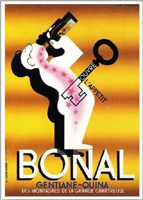 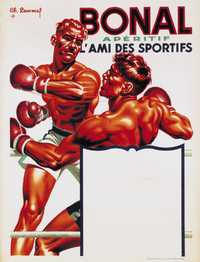 |
Campari
(the
recipe is secret, includes over 60 ingredients and at least includes
quinine, rhubarb, ginseng, orange peels and aromatic herbs, and among
them gentian) |
Italy |
|
|
Chantelune |
Aveyron, Francee) |
 |
Ciane
|
Pontarlier,
France
|
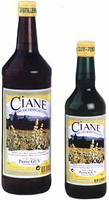 |
Cinzano
Bianco Vermouth,
(with artemisia, gentian root, clove and cinnamon) |
Italy |
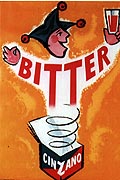 |
Cocchi
Chinato
(with quinine bark, rhubarb, gentian, and cardamom seeds) |
Italy |
|
|
Couderc
Gentiane |
France |
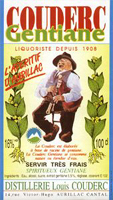 |
|
Diablerets (Les
Diabletets |
|
|
|
Enzian (with
Gentiana lutea) |
Germany |
|
|
Fernet (with
gentian and centaury) |
Albania |
|
Fernet
(with licorice, condurango, cardamom, cinnamon, gentian, and saffron) |
Italy |
|
Fernet-Branca
(includes 27 herbs, including aloe, gentian, rhubarb, myrrh, cinchona
bark, galangal, and zedoary) |
Italy |
 |
|
La Fourche du Diable
|
|
|
Gammel Dansk
(with angelica, rowan berries, star anise, nutmeg, ginger, laurel,
gentian, seville, and cinnamon) |
Denmark |
|
|
Gençamelica |
|
|
Geneva Gin
(with gentian) |
|
|
| Gentia |
|
|
| Gentiane
Arnaud |
|
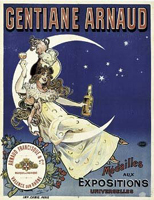 |
|
Gentiane Bellet |
|
|
| Gentiane de l'Aubrac;
Gentiane d'Aubrac |
|
|
| Gentiane
Deribaucourt |
|
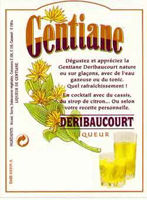 |
|
Gentiane des Peres
Chartreux |
|
|
|
Gentiane
Distillerie de la Chapelle |
|
|
|
Gentiane
Distillerie
Loius Coderc |
France |
 |
|
Gentiane
Distillerie Perigord |
|
 |
|
Gentiane Janot |
|
|
| Gentiane
Sauvage Roudaire |
|
|
| Gentiane
Théjy |
France |
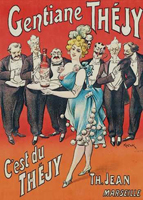 |
Graspamaro,
De Nigri distillery
Grappa with herbs, among
others Swertia and Gentiana lutea. |
Italy |
 |
|
Grassl
Alpenbitter
|
Grassl Enzianbrennerei,
Germany |
|
|
Grassl Enzian Bitter (40%
alcohol) |
Grassl Enzianbrennerei,
Germany |
|
|
Grassl Enzian
Kräuter-Likör (also sold in 5 liters jugs, 35% alcohol) |
Grassl Enzianbrennerei,
Germany |
|
Grassl
Gebirgsgentian (40% or 50% alcohol, also sold in 5 liter jugs)
|
Grassl Enzianbrennerei, Germany |
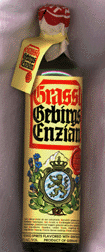 |
| Iza |
|
 |
| Les
Diablerets |
|
|
|
Lioran Gentiane |
|
|
|
Le Missile
Sol-Air |
|
|
Miclo - Gentiane
|
Alsace, France |
|
Moxie (soda)
(Moxie
Soda outsold Coca Cola - history article;
link to article about Moxie)
Moxie Collectors site |
Needham Heights, Massachusetts, USA
Motto: "Never sickly
sweet",one
kind of Moxie sold as "Non-Fattening Dietetic Moxie" |

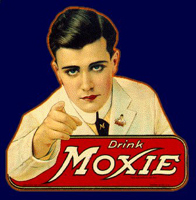 |
Nardini
Amaro
(with bitter orange, peppermint, & gentian) |
Italy |
|
| Oberzamtreiber |
|
 |
| Planeze
Gentiane |
France |
|
|
Penninger
Enzian |
Germany |
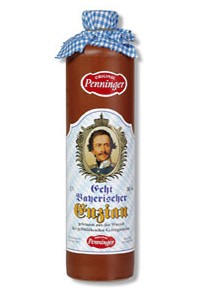 |
|
Peychaud's Bitter |
Sazerac, New
Orleans, USA.
Bitter with
a gentian base, recipe from 1793. |
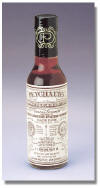 |
|
Picon Biere |
|
|
|
Picon Zinc |
|
|
|
Pentanes |
France |
|
|
Pontiane |
|
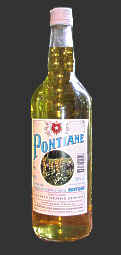 |
Ramazzotti
(33 herbs and spices including gentian root, rhubarb, cinnamon and
Sicilian orange peels) |
Italy |
|
|
Rigi-Bitter |
|
 |
|
Salers
|
France |
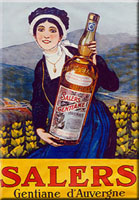 |
|
Schroffen-Enzian (40%
alcohol) |
Grassl Enzianbrennerei,
Germany |
|
Secrestat
(also called
Bitter Secrestat) |
It was produced in France
(maybe also Argentina), and is no longer made. It was popular during
and right after the American Prohibition. |
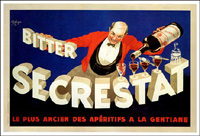 |
Stirrings Blood Orange
(non-alcoholic, with cane sugar, gentian extract and blood orange
extract) |
Made by Nantucket Offshore |
|
| Sun
7 |
|
|
Suze
(aperitif, wine-based liquor flavored with yellow gentian,
Gentiana lutea).
|
France
Invented in 1889 by
Fernand Moreaux.
Suze uses Gentiana lutea industrially cultivated south of Paris
to produce the famous bitter beverage. |
 |
Underberg
(bitter)
|
Germany |
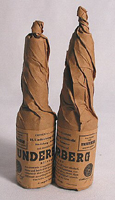 |
Unicum
[Unikum] (aperitif)
|
Hungary |
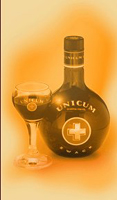 |
|
Versinthe (Pastis
mixed with gentian) |
Provence, France |
|
|
vin de gentiane
(wine mixed with distilled alcohol and gentian extracts) |
France |
|
|
Weis-Flog Bitter |
|
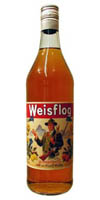 |
































